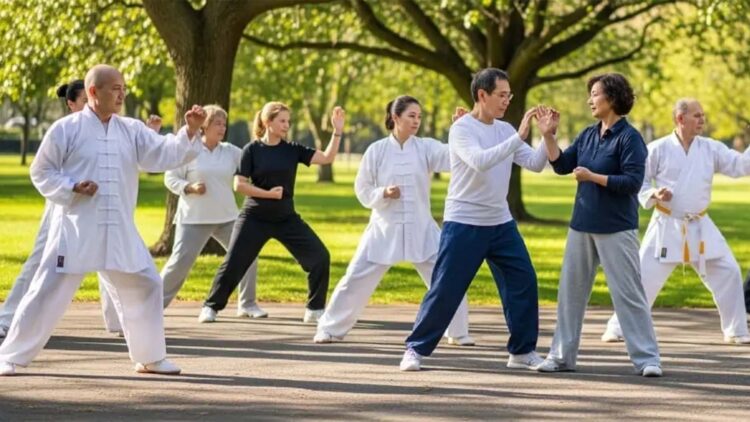Keeping in shape after 50 can be difficult, but a Harvard Medical School study offers a simple, practical solution: martial arts training. Though it may come as a surprise, it makes sense for active aging. Whereas running or long, fast walks expose joints to repeated impact, martial arts prioritize alignment and speed control over impact. Increased body awareness and improved muscle strength, balance, and coordination are the results. Mentally, exercise helps in stress management, memory, and focus—all of which are critical for mental health, overall wellbeing, and eventually longevity. Experts suggest Tai Chi, Aikido, and Wing Chun as disciplines for beginners and middle-aged people.
Each one focuses on thoughtful movement, breathing, and timing—skills that help you move with confidence and avoid falls as you age.
Why martial arts help in active aging
Martial arts offer structure without turning to punishment. Because running or constant brisk walking can overload the knees, hips, and ankles, these arts put a priority on controlled steps, soft movements, and strength built through alignment rather than violent impact. Put another way, the work values balance, strength, and coordination while avoiding stress on the joints. You also have to be mindful of your breathing and timing when training, and this concentration helps with memory, stress reduction, and stimulates calm decision-making in everyday circumstances.
Mental wellness and a more stable sense of wellbeing are progressively better with this mind-body practice.
The Harvard Medical School takes a practical approach to middle age: choosing repeatable habits. Martial arts are ideal because they blend skill development with moderate conditioning. You need presence, posture, and patient physical exercise instead of explosive speed.
Three styles that suit beginners
Tai Chi: Imagine steady breathing combined with slow, flowing sequences. The circular, fluid movements train the hips, knees, and ankles to cooperate. An easy start that still requires coordination and focus, the benefits are better balance, relaxed posture, and a stronger mind-body connection.
Aikido: This art puts more emphasis on redirection and circular, controlled movements than fighting with force. When strength progressively increases, you learn how to turn, step, and align the body to keep joints safe. That subtle precision helps older adults keep their coordination and reactive stability, which are actually applicable to everyday life.
Wing Chun: A compact, practical style that rewards efficient footwork, centerline awareness, and quick hands. It works well for a range of body shapes and ages because timing and structure are given more importance than power in itself. While finding instructors can be more challenging, when they are available, it offers simple to follow workouts that improve reflexes and balance.
Getting started and staying consistent
Start out easy. Choose between Wing Chun, Aikido, or Tai Chi, and look out for a teacher with experience training senior citizens. Ask about options for adjusting positions or movements, and also about beginner classes. During the first few weeks, concentrate on three fundamentals: breathing (slow and steady), footwork (short, controlled steps), and posture (long spine, soft knees).
A good place to start is with 10 to 20 minutes of practice three or four times a week. Create a simple routine that includes a quick cooldown, a few core exercises, and a joint warm-up. After every session, note your energy, mood, and sleep quality. Those notes help you stay motivated and recognize your progress.
Reduce the intensity of a move if it causes joint pain. Keep the mental aspect in mind. Practice should be seen as a stress-reduction exercise that involves focused attention, calm breathing, and a quiet environment.
Gentle strength training and mindful movement can make everyday tasks easier, walks more confident, and stairs feel safer after months of practice.

